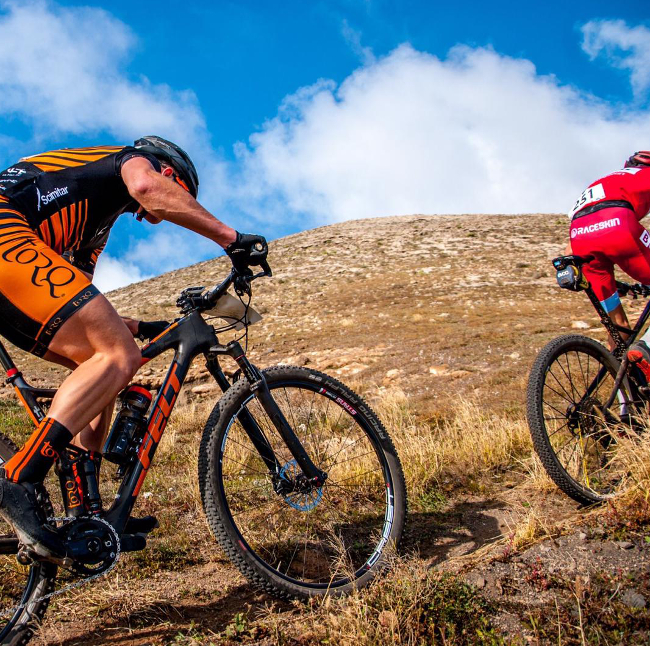At long last, we have put together a definitive nutritional guide for stage-racing and multi-day events. We give you a blow-by-blow account from build-up to break-down. In other words, from start to finish – if we do our job properly, we’re going to make sure you never break down!
Having recently returned from Lanzarote with the TORQ Mountain Bike Race Team who participated in a UCI-sanctioned 4-day off-road stage race, this topic couldn’t be fresher in our minds. In this article, we’re going to look at the idiosyncrasies of stage racing and the simple practical steps you could take from a nutritional perspective if you’re looking to do something similar yourself.
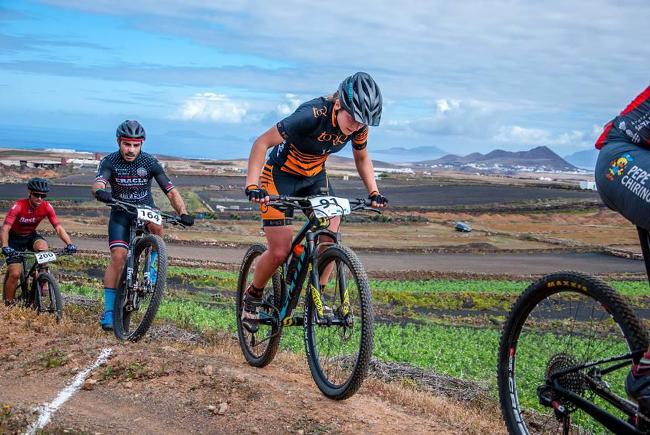
Whether it’s a stage race, multi-day event or training camp, we’re going to cover everything. We will be looking at the steps you should take before you travel, whilst travelling, the day before the event starts and what to do once you’re in the thick of it. Of course we’ll also talk you through dealing with the aftermath – what to do when it’s all over – although we can assure you all the hard work will have been done by then.
You may have entered a formal stage race, or you could be riding from Land’s End to John O’Groats as a challenge with your friends, the principles are the same, so take the time to read this article.
Before you go
We won’t go into detail about how to train and prepare physically for your chosen event, because this article is centred entirely on nutrition. If your training has gone to plan and you’ve had some sound advice, during the days approaching your scheduled event you won’t have done very much by way of exercise. This is called a ‘taper’ and it’s a vital part of stage race preparation. It provides rest and recuperation from the rigours of hard training and allows for an adaptive process called ‘supercompensation’ or ‘peaking’ where one’s body reaches a heightened energised physiological state. You will be at your fittest and freshest at this point in time if you’ve got everything right. If this talk of ‘tapering’ is alien to you and you need some advice on getting a training plan together to peak you for a big event, consider taking a look at our Fitness Consultancy services by clicking HERE?
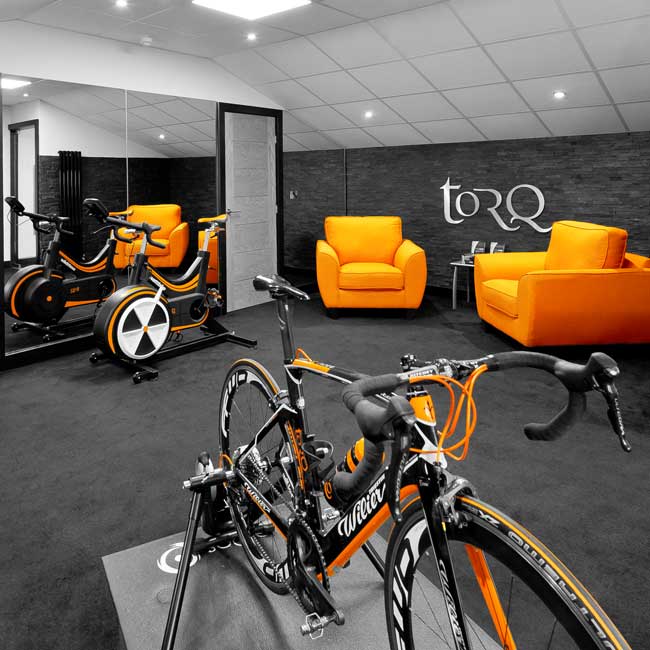
From a nutritional perspective, you don’t need to do much other than listen to your hunger reflex in the days leading up to your event whilst your taper weaves its magic, but there should be a significant shift in calorie intake 24 hours ahead of your first day of exertion, which we will discuss shortly under the topic of ‘Carbohydrate Loading’. During the taper your appetite will drop, because you won’t be doing so much exercise and your muscles and liver will naturally store the carbohydrate you’re consuming as glycogen. It’s vital that you maintain your grazing habits, consuming 20-25g of high quality protein every 4 hours or so to maintain muscle integrity. You’ve trained hard to build this muscle, so make sure you consume the raw materials necessary to maintain it. Research suggests 5 to 6 X 20-25g ingestions of protein per day, which works out as a dose roughly every 3 to 4 hours. There’s little point in exceeding the suggested protein dose, because you won’t be able to make use of it and it will be stored as all excess calories are within the human body – as glycogen in the liver and muscles or as fat. Spread your protein intake out over the day.
Travelling
If you’re travelling long distance to your event, especially if it’s on an aeroplane, you need to be organised with your nutrition, or you could just find yourself eating anything and everything!

Take plenty of fresh fruit – the kind that will travel well and some convenient foods with good levels of protein and carbohydrate. There are some great high protein snack bar options available these days, but just make sure the products you choose don’t contain too much fat, because it seems like the word ‘protein’ is waved around liberally these days and is a licence for manufacturers to cram their products full of nuts. Nuts are fine as part of a balanced diet, but could easily deliver excessive calories if over consumed. Take a look at our TORQ Recovery Bar and consider this as an option. Don’t be put off by the word ‘recovery’ – it’s a great high protein cold-pressed snack bar and very low in fat. A meat based sandwich will have 20-25g of protein in, so don’t just rely on pre-packaged bars, however bars are incredibly handy if you need the convenience. TORQ Recovery Bars have a little under 20g of protein per bar, so grazing on one and a half bars at a couple of points during your travel (3 bars total) will give you 2 doses of the protein you need as well as providing a solid delivery of carbohydrate.
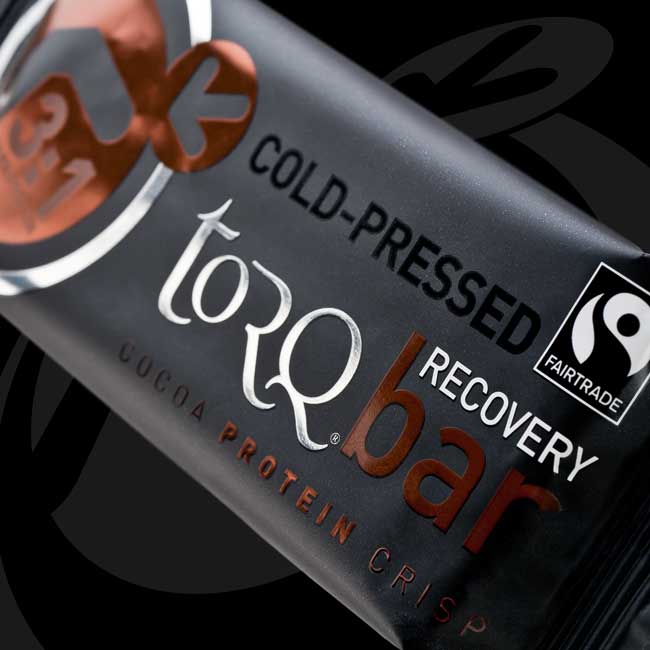
Don’t forget to drink plenty of water whilst you’re travelling too – the whole process is tiring and air conditioning systems on airlines suck the moisture from your body. Consuming plenty of fresh fruit, water and sticking to a simple nutritional protocol will see you arrive at your destination far less fatigued than you would otherwise be. That said, due to the fact that travel can be so exhausting, we strongly recommend that you give yourself plenty of time to get to your destination and acclimatise. If your event starts on a Saturday for instance, you should really be aiming to travel on Thursday at the latest. The day before the event should be left clear to do some pre-race drills, stretching, relaxing and of course to carbohydrate load.
Carbohydrate Loading
The purpose of carbohydrate loading is to super-charge your physiology with glycogen (the form that carbohydrate is stored within the body). Carbohydrate is stored in limited supply (about 500g/2,000kCals) in the muscles and liver and is a key fuel for high intensity endurance performance. When your stores run out during exercise, you will ‘bonk’ or ‘hit the wall’, a phenomenon that see’s any hope of a great performance go to the graveyard! If it’s never happened to you, it’s difficult to describe as an experience other than it will probably make you cry! It really is something you will want to avoid at all costs.
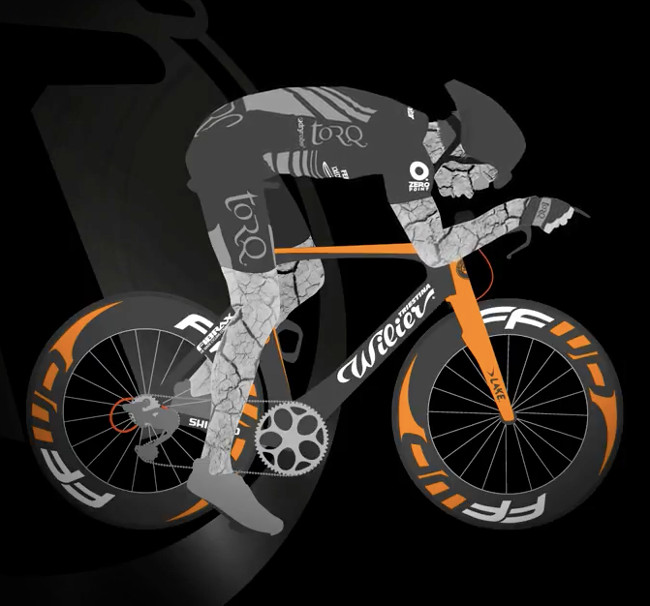
Imagine having a really fast sports car and comparing its performance to a sensible family hatchback – the sports car’s going to go around the race track faster every time isn’t it? Now remove the fuel from the sports car and watch the sensible family hatchback trundle around the track to victory. The human body running out stored carbohydrate is no different. You can put the hard training in and on paper your performance could be significantly better than the person next to you on the start line, but if they’ve got fuel and you haven’t, you’re going to be in trouble. For the avoidance of doubt, from this point onwards, irrespective of how much training you’ve done in preparation for your chosen event, your number 1 priority must be to cram as much glycogen into these stores as possible and then ‘look after them’. A little later we’ll discuss ‘looking after your stores’ but for now we’re going to talk about loading them.
Carbohydrate loading isn’t necessarily the appropriate course of action for 1-day events, unless they are particularly protracted, because it can leave your legs feeling heavy and a bit ‘sparkless’ but multi-day events need to be addressed differently. Putting up with a bit of ‘heavy leg syndrome’ for the first couple of hours of day 1 will be pay off in the long term. Purely and simply, the more carbohydrate you’re carrying going into the race, the easier it will be look after your stores as each day progresses, the better your overall performance will be.
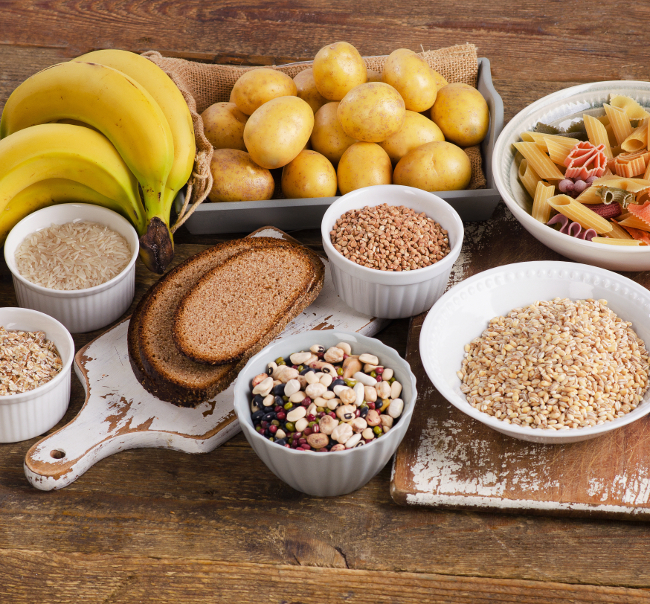
Start to consciously increase your carbohydrate intake 48 hours before the start of your event. Make sure you have a good understanding of what carbohydrate actually is so that you’re consuming the correct foods. We’ve lost count of the number of times someone’s thought they are carb loading on sausages or nuts? Take a look at the foods in the surrounding pictures to get an idea of the kinds of things you should be eating. Your choices need to be high carbohydrate and low fat. Fruit is full of fibre and will keep everything moving through your digestive system, but isn’t very high in carbohydrate calories, so although it should form a part of your carbohydrate loading regime, you will need to hunt for some denser calorie sources too.
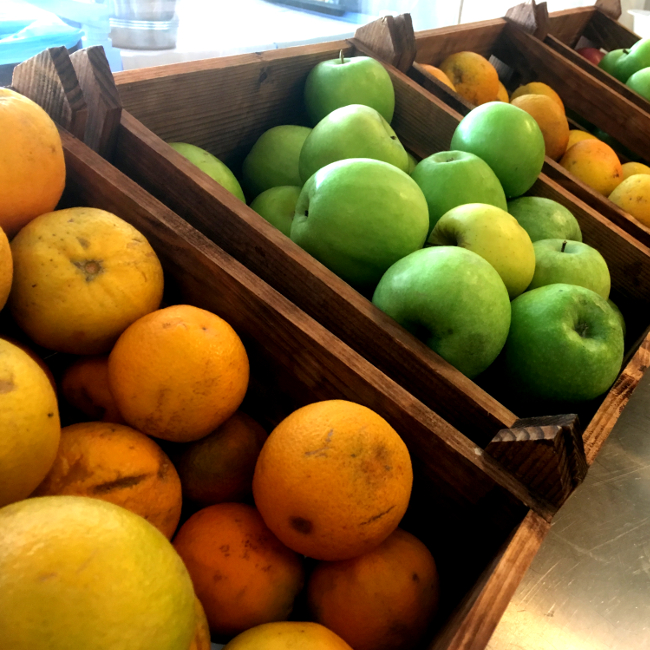
For every gram of carbohydrate you consume, your body stores 3 grams of water, so bear this in mind. Whilst you’re travelling, you should be consuming plenty of water anyway, but continue to drink the day before your event too or you won’t store the carbs.
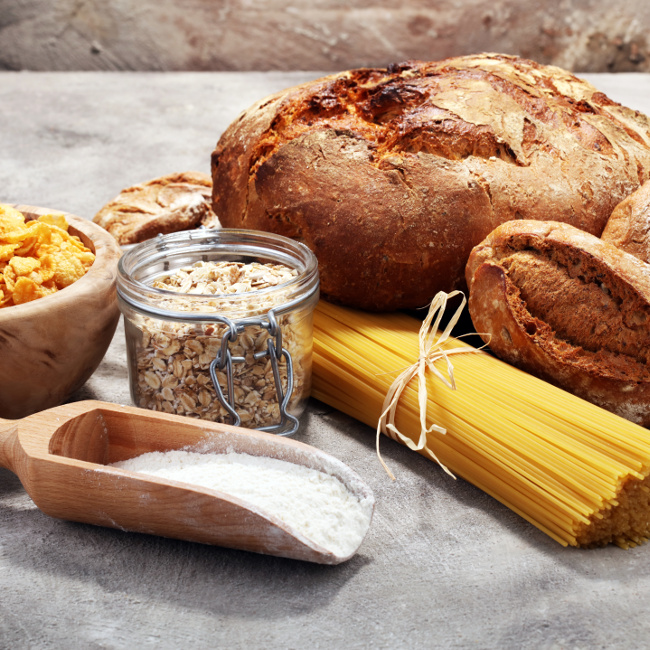
Elevating your carbohydrate intake significantly 24-hours prior to the start of your event is essential and this alone will help to load higher levels of carbohydrate into the muscles than normal. There have been a vast number of carbohydrate loading protocols researched and discussed over the years, going back as far as 1967 (Ahlborg et al) and there’s a summary of the approaches discussed here:
https://www.tandfonline.com/doi/pdf/10.1080/02640414.2011.585473
Some of the early approaches involved quite unsociable and complicated glycogen depletion protocols which have since been proven unnecessary. Taking on board the available research over the years, at TORQ we have put together a carbohydrate loading regimen that has worked really well with our athletes in practice, so we’ll share that with you:
48 hours prior to the start of your event:
Consciously increase the amount of carbohydrate you’re consuming, but don’t stick to any particular protocol, just be aware of the need to consume more.
24 hours prior to the start of your event:
Consume 10-12g of carbohydrate per Kg of bodyweight over the next 24 hours. The majority of this should be before you go to bed the night before the event (see table below to get an idea of the amount you need to consume. The easiest way to figure out how many grams of carbohydrate to eat is to multiply your bodyweight by 10. The diagram below gives an example schedule for a person who weighs around 60Kg. Please note that this is the ‘minimum’ you should be looking to consume. If you weight 70-80Kg and you want to be hitting 12g of carbohydrate per Kg bodyweight, you’ve got some serious eating to do!
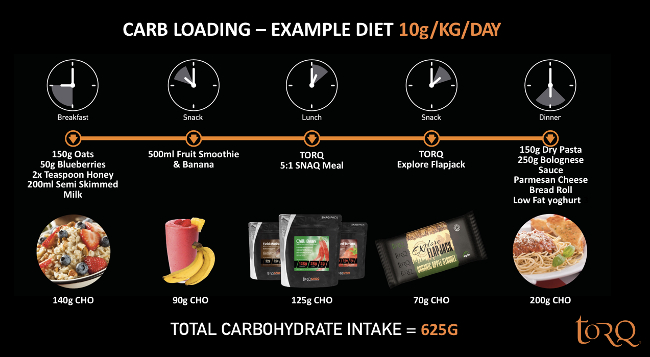
Don’t get too hung up on counting carb grams, just eat ‘a lot’ and if you end up consuming too much, you’ll store a tiny amount of fat as your body looks to store the excess calories, which you’ll burn the next day anyway. Better to have too much than not enough. At the same time, it’s not a bad plan to get an idea of how much carbohydrate there is in various foods so that you make efficient choices during this process. We could insert a table listing whole range of foods here, but it’s much easier to direct you to a resource from Diabetes UK:
Take an interest in the nutrients that are in your foods by looking at the packaging when you purchase ingredients and prepared foods or snacks. You’ll begin to get a feel for the amount you’re taking onboard. This habit becomes second nature for people with diabetes, because it’s essential that they bolus with the correct amount of insulin for the carbohydrate consumed. At TORQ, we are very engaged in the area of diabetes management and prevention, so if you do have any questions at all on the subject, please don’t hesitate in contacting us.
As close as you can to 24 hours prior to the start of the event, you will need to perform a single 3-minute flat-out anaerobic interval. Make sure you warm up well, perform the effort and then spin gently whilst consuming a high quality recovery drink. We’re not going to beat about the bush here, use TORQ Recovery Drink. We explain a little later why this is product is head and shoulders above the competition, but this is not a time to be messing around. Invest in the right product and if your personal research uncovers one with better functionality than ours, we’d love you to let us know.
The reason for performing this 3-minute drill is twofold. Firstly, it opens up your muscular neural pathways. You’ve been travelling and sitting around doing very little, so you need to remind your muscles of the worst case scenario for the following day. A high intensity brief drill like this will not cause fatigue, but it will leave your muscles prepared and primed for tomorrow’s effort. Leaving the neural floodgates open so that the last thing your body remembers is going ‘fast’ is an essential part of your pre-race taper. Secondly, the anaerobic effort stimulates the mobilisation of an enzyme called glycogen synthetase and a number of other intracellular processes which help you to store carbohydrate – the amount of carbohydrate burned in the single 3-minute interval will be insignificant compared to the amount it will help you to store.
After consuming your recovery drink, continue to consume high carbohydrate/low fat food sources and drink plenty of fluid. Of course, it goes without saying that in your quest to binge in carbohydrate, don’t forget also to consume 20-25g protein every 3 to 4 hours.
As well as the high carbohydrate foods listed in the table above, there are a couple of specialist products available from TORQ that can help this process significantly. Firstly, we have developed a range of high carbohydrate, low fat meals and breakfasts that you can conveniently fit into your carbo-loading schedule. The meals and breakfasts suitable for carbo-loading are our 5:1 varieties, available from the following links:
TORQ 5:1 Carbohydrate:Protein Breakfasts
TORQ 5:1 Carbohydrate:Protein Meals
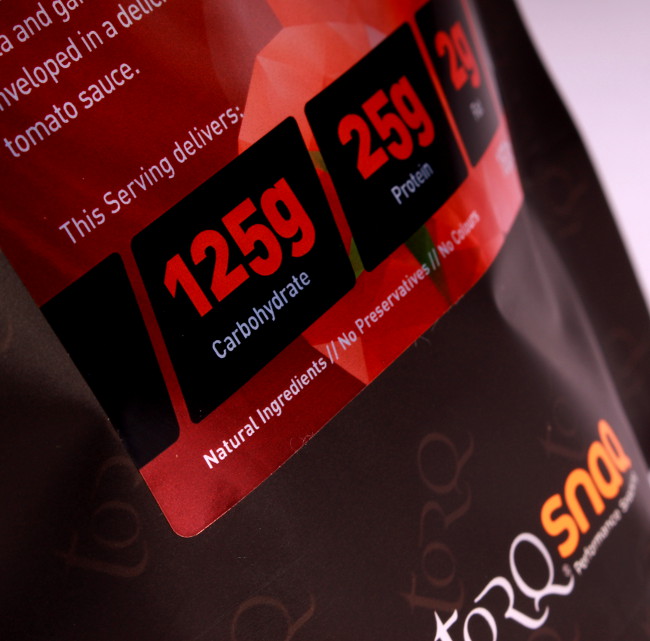
The 5:1 meals and breakfasts have almost identical nutritional profiles, give or take a gram of fat, so it doesn’t matter which one you have, it just comes down to whether you want something sweet or savoury. Where they really excel is that they both contain 25g of high quality protein, so that’s your protein dose dealt with, but also they contain a whopping 125g of carbohydrate per serve. For a 70Kg person, this alone is around 20% of the carbohydrate calories needed for the entire 24-hour period.
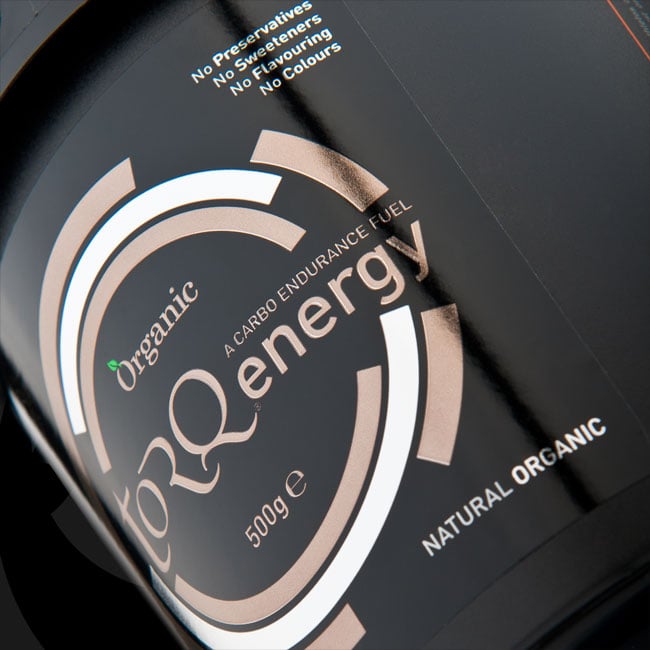
The other product that can be immensely useful during the carbo-loading process is our neutral tasting TORQ Energy Organic Energy. This can be added to any food dish (including savoury meals) or can be made into a neutral tasting drink (or you can add squash if you want flavour). It’s highly versatile and is dubbed ‘the invisible calorie’ due to its flavourless nature by coaches of pro riders whose job it is to prepare their athletes for stage racing. 3 scoops of TORQ Energy Organic popped into a large cup of tea or similar beverage will provide the same carbohydrate calories as a sizable bowl of pasta and you’ll barely be able to taste it. For more information on TORQ Energy Organic, click HERE. Below is a table summarising the carbohydrate content in the TORQ Meals, Breakfasts and Organic Energy powder.
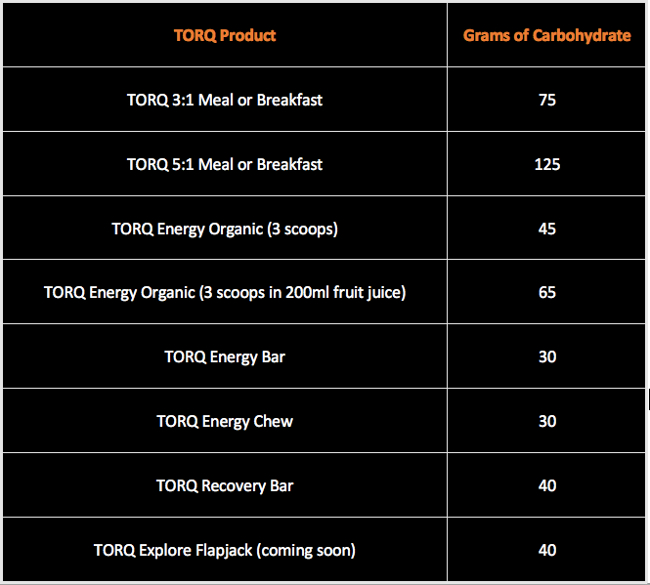
Day 1
We’re going to cover quite a lot of information under ‘Day 1’ but please bear in mind that many of the areas discussed here will simply be repeated on Day 2, Day 3 and so on. We’re going to cover everything comprehensively in this section, so if you feel like our advice for Day 1 is going on forever, we’re only doing it so we don’t have to mention it again. In essence, make an effort to understand what to do on Day 1 and the rest will easily click into place.
Your glycogen stores should be fully loaded by the time you wake up, but you will have lost some of your liver glycogen during your overnight fast. This can easily be topped up however with a moderately high carbohydrate breakfast. Ordinarily, if this was a 1-day event, you could get away with porridge, regular breakfast cereal or a few slices of toast, but remember, this is multi-day. The decisions you make today will affect you tomorrow – at TORQ, we’ve always used the moto ‘Eat today for tomorrow’ to remind the athletes we talk to that the nutrition they consume today is what stops them having problems tomorrow. Performance in Stage 4 of a multi-day event is going to be heavily influenced by the nutrition consumed in the days preceding it – days in which you will be exercising hard and drawing heavily upon your available resources.
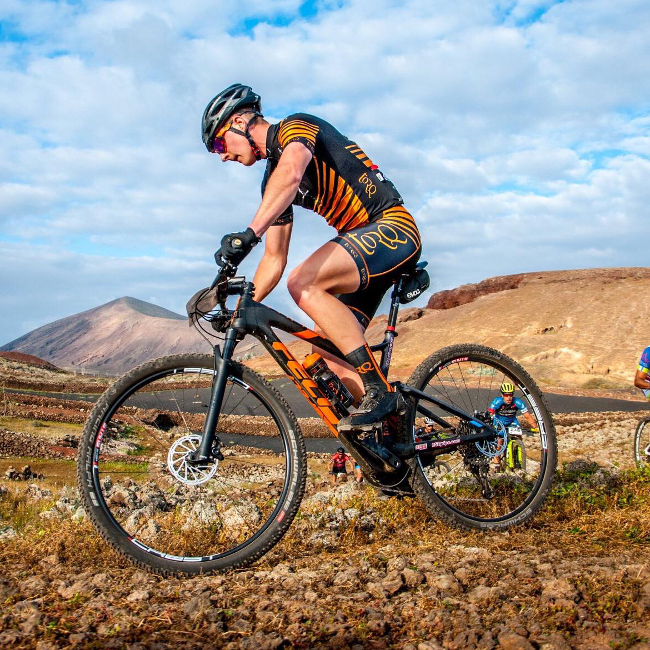
There are 2 vitally important macronutrients to consider during your multi-day events and these are carbohydrate and protein. These two nutrients might have been mentioned a few times already during this article and once the racing starts, the focus on them becomes all the more vital. Carbohydrate is the fuel your body needs to function and protein is essential in servicing your engine – keeping you from falling apart!
The need for protein has already been discussed at length and regular protein consumption on the days you are competing remains the order of the day. The principles are the same, so you should consume 20-25g of high quality protein every 3 to 4 hours to provide the necessary substrate for muscular repair and adaptation. If you don’t stick to these rules, how can you expect your ‘engine’ to be in a healthy state after a few days of competition? You don’t need more than 25g in a single serving, because your body can’t process it, but the 3 to 4 hourly drip-feed optimises the processing of protein by your muscles and means that there is always material available for the repair and adaptation process.
Your breakfast on day 1 therefore should contain 20-25g of protein – your first hit of the day. Add to this a moderate amount of carbohydrate (75g) to top up your liver glycogen and you’re ready for Stage 1.
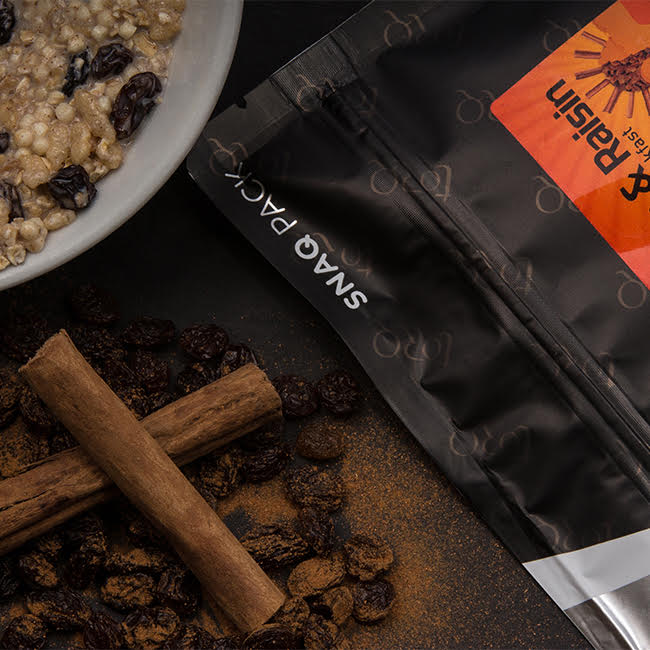
Where do you get 25g of protein from? A tin of baked beans and a couple of slices of toast will give you 20-25g of protein as well as the carbohydrate you need. 3 eggs on toast will give you a similar amount of protein, but also quite a lot of fat, which is less desirable for reasons we will discuss shortly. Half a tin of baked beans on 2 slices of toast with a poached egg might be a good compromise and would give you the 20-25g protein you need. It’s for reasons of cooking logistics and a desire to create an optimal pre-exercise breakfast that lead us at TORQ to develop our 3:1 Instant Breakfasts. These contain 25g of high quality protein and a substantial 75g of carbohydrate delivered from a variety of sources. As demonstrated here at our stage race in Lanzarote recently, they are incredibly easy to prepare with either hot or cold water.
If you’re interested in finding out more information on this product, click HERE. Our instant 3:1 breakfasts are available in Natural Raisin, Cinnamon & Raisin and Banana & Mango flavours.
So, why is fat the enemy first thing in the morning, hours before you compete? Fat has plenty of energy (9kCals per gram compared with 4kCals per gram for protein and carbohydrate) but it’s not a calorie we need. Our bodies store plenty of fat and it’s just as easy for us to mobilise this fat to burn as a fuel from our bodily stores as it is to get it directly from the food we eat. Also, any carbohydrate or protein calories we consume in excess is stored as fat anyway, so there’s a logical argument to say that the calories you should be focussing on should be the ones that are ultimately going to be useful – better to store an excess of useful calories than provide a calorie that has no obvious purpose other than to be stored. Fat does contain the fat-soluble vitamins A, D, E and K as well as essential omega oils, so it certainly shouldn’t be outlawed, but there’s a time and a place and prior to, during or immediately after exercise are not the right times to consume fat. Fat blocks the absorption of carbohydrate and protein due to its slow passage through the digestive system. Your breakfast first thing in the morning before you exercise needs to be low fat, moderate to high carbohydrate and with 20-25g of high quality protein. This will be absorbed quickly and efficiently, leaving your digestive system clean and ready to accept the during-event fuelling you’re going to throw at it. We’ve written previously on Nutritional Health and you should take the time to take on board our perspective on what we feel constitutes a healthy diet. Click HERE to read more – it’s pragmatic and sensible. Fat certainly has its place in your diet, but timing is critical, especially during events like this.
You’re on the start line with 5 minutes before kick-off. Take an energy gel. This is the start of your during-race fuelling. It’s important to understand the difference between how your body burns your glycogen stores, which you’ve worked incredibly hard to load-up prior to the event and the fuel you take on board through energy gels, drinks and bars during the race itself. Stored glycogen (called ‘Endogenous’ carbohydrate) is released as a fuel source during exercise, but the more ‘Exogenous’ carbohydrate (carbohydrate from energy products) you consume, the less endogenous stored carbohydrate you need to release. We could write a number of paragraphs explaining this process, but it is much more easily explained through a video. See below:
Hopefully the video explains clearly, the interplay between endogenous and exogenous carbohydrate. The more you fuel, the faster you can ‘afford’ to go and the better you preserve your endogenous stores. In stage racing, looking after your endogenous stores is critical. You’ve prepared perfectly and gone into this race with fully loaded stores. You must now do everything in your power to protect them and during the event and this means consuming the maximum amount of carbohydrate your body is capable of absorbing and using.
The video explains how absorbing and using 90g of carbohydrate per hour is only possible if the products are formulated using 2:1 Glucose Derivatives:Fructose, called ‘multiple-transportable carbohydrates’, which all TORQ products are. The video demonstrates that you will get benefit from consuming 30g per hour and 60g per hour, but for all the reasons mentioned so far, it’s obvious how 90g per hour offers further advantages, particularly in stage racing. You can use any low fat, high carbohydrate foods and drinks to fuel with, but don’t expect them to sit comfortably on your stomach and don’t for a moment think that you will be able to consume and use 90g of carbohydrate per hour from them.
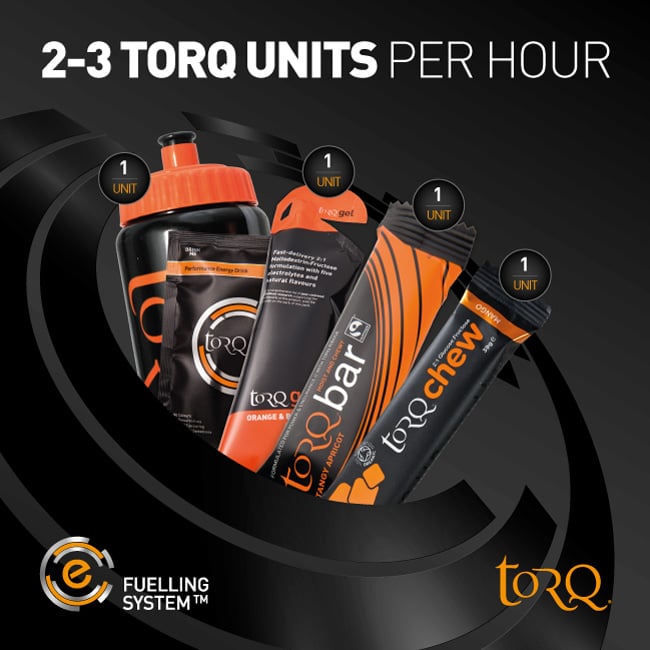
The research has been extensive and there are over 20 peer-reviewed published studies listed at the end of this article supporting the specific benefits provided by 2:1 formulations – these blends need to be formulated specifically and don’t occur randomly in nature or within confectionary factories! Even if you’re not planning on fuelling on 90g carbohydrate per hour, you’re still better off consuming 60g per hour from a 2:1 formulation like TORQ and being comfortably 30g below your absorption threshold than being ‘on the absorption limit’ with glucose/sucrose based products. Gastro-intestinal comfort should be very high on your list of priorities at all times and certainly during a multi-day event. Fuelling doesn’t need to be unpleasant, which is why TORQ’s products have such interesting and diverse flavour profiles. Click HERE to take a look at our 2:1 Energy Gels for instance – flavours range from Black Cherry Yoghurt and Lemon Drizzle through to Rhubarb & Custard, Apple Crumble and Raspberry Ripple. Enjoy the fuelling experience and consume products that deliver energy properly and won’t upset your stomach.
How should you be getting your carbohydrate into your body, through a drink, gels, bars or chews? It’s for the obvious confusion generated by the vast array of different energy products on the market that we created the TORQ Fuelling System. All TORQ products contain 30g of carbohydrate, whether 500ml of Energy Drink, an Energy Gel, an Energy Bar or an Energy Chew, so all will deliver the same energy – which product you choose will come down to your hydration needs and your textural desires. Take a look at this short video, which explains our system very succinctly:
Notice how your fuelling intake should remain constant irrespective of perspiration rates, but when conditions are warmer and perspiration rates are higher, more of your carbohydrate should be delivered through your drink. By the same token, if perspiration rates are lower, you should be leaning more towards eating your concentrated carbohydrate units and drinking less. The diagram below sums this up quite nicely:
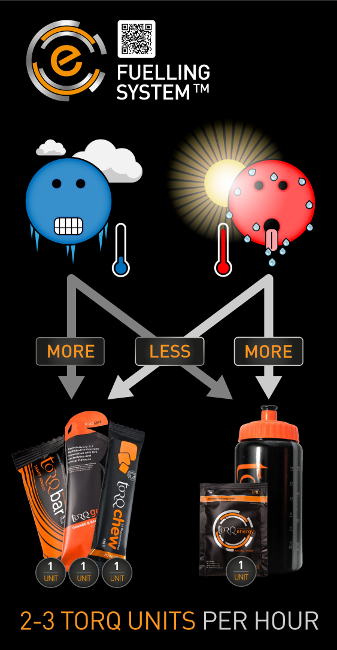
The length of the individual stage will have a significant impact on whether you need a 25g protein feed during the stage too. Typically, for any stage up to 4 hours long, you won’t need to consume protein – any benefits you might gain in the long-term will be outweighed by decreased carbohydrate uptake (protein intake will slow the absorption of carbohydrate). However, if the stages are much longer than 4 hours, you really should be looking at taking on a protein feed after 4 hours. For instance, if the stage is 8 hours long, you should be taking on board 25g of protein at around 4 hours and then immediately at the end in the form of a recovery drink, with carbohydrate. If your multi-day event isn’t necessarily an organised race (perhaps a training camp or point-to-point like LEJOG) you may be exercising for long periods of time during the day, in which case you should make sure you consider protein intake. Our recent trip to Lanzarote had stages that lasted (depending on ability) 1.5 to 2.5 hours (D1), 2.5 to 3.5 hours (D2), 1 to 2 hours (D3) and 3.5 to 6 hours (D4), so the only stage that was long enough to consider protein feeding was on the final day and since there wasn’t a stage on Day 5, what possible advantage could have been gained? The ‘Eat today for tomorrow’ motto doesn’t apply when you don’t have any exertion to do the following day. The same argument could be applied to single-day ultra-endurance events in that the negative impact protein intake has on the carbohydrate fuelling process would outweigh any benefit it would bring to your performance. On single-day events, you might feel more fatigued the day afterwards by missing out on protein, but that doesn’t matter if your performance on race day was better for having a consistent uninterrupted 90g per hour carbohydrate per hour fuelling protocol. As a rule, avoid protein intake during exercise unless there are multiple stages are they are particularly long and arduous.
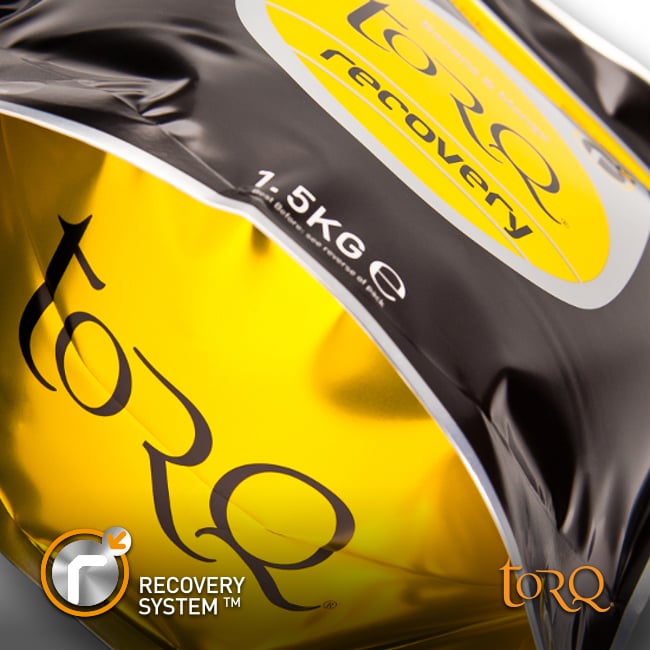
Consuming a recovery drink immediately after the stage is essential as this not only delivers a desperately needed 20-25g of high quality protein, but also a large dose of carbohydrate to help restock your endogenous glycogen stores. For the same reasons mentioned during the carbohydrate loading phase, for a short window of time after exercise, muscle enzyme activity (glycogen synthetase) is elevated and this really assists with the glycogen storage process. Use a recovery drink that contains 3 parts carbohydrate to 1 part protein. Whey protein is the quickest acting and most effective for post-exercise recovery, which is why we use it in our TORQ Recovery Drink. If you are vegan, pea protein is the best and quickest-acting protein source to use and you might want to consider TORQ’s 3:1 Vegan Recovery Drink. Our whey protein based recovery drinks are pre-flavoured and taste like a thick milkshake, whereas our Vegan Recovery formula needs to be added to 400ml of Oat Milk or Orange Juice. We have taken account of the nutritionals within the Oat Milk and Orange Juice and have produced 2 different powder blends, so as long as you add the correct blend to the correct fluid, this vegan product will be 3:1 Carbohydrate:Protein.
Take a shower, get into some comfortable chill-out clothes and graze on some fruit and high carb snacks whilst you’re preparing a meal. We wouldn’t usually advocate eating sweets like wine gums and fruit pastels as part of a healthy balanced diet, but this situation is unusual and different. You need to keep the carbohydrate going in to re-stock those endogenous glycogen stores and although fruit should be consumed, because it is richly infused with important micronutrients, fibre and water, trying to get all of the carbohydrate back into your liver and muscles without a bit of help from some concentrated carbohydrate sources like sweets is going to be impossible. Often dubbed ‘empty calories’ because they contain nothing but carbohydrate, it’s for this reason that they can play an important role in assisting recovery after exercise.
We mentioned earlier about the use of TORQ Energy Organic too. If you don’t like the idea of eating sweets, make a cup of tea or coffee and add a few scoops to it, or add a few scoops to a glass of fresh fruit juice. Other high fat low carb items that you might want to have to hand could include low fat cereal bars. The TORQ Bar is designed for energy delivery during exercise, but it makes an equally wholesome low fat high carb snack to enjoy with a cup of tea. If you can find a supply of low fat cereal bars in your local supermarket, they’ll work fine too, just make sure they don’t contain artificial sweeteners – you need the sugar remember – it’s carbohydrate. Savoury snacks like pretzels are low in fat and high in carbs too, so go to your supermarket, look at the labels and pick up a variety of foods to graze on. One of our riders in Lanzarote took to bowls of cereal and had a bit of a fetish for low fat tinned rice pudding. It’s all good – add some honey or a blob of jam too and get the carbs in. Hopefully you get the idea? Fat is the enemy though remember? It will slow down your digestion and stop you feeling hungry. You’ll know if you’re eating the right things, because you’ll keep getting hungry and wanting more. Finally, on the subject of grazing, remember to consume plenty of fluid so that you store this carbohydrate. It takes care of itself really through the thirst reflex, but there’s no harm in making sure you’ve got a pint of water on the go at all times.
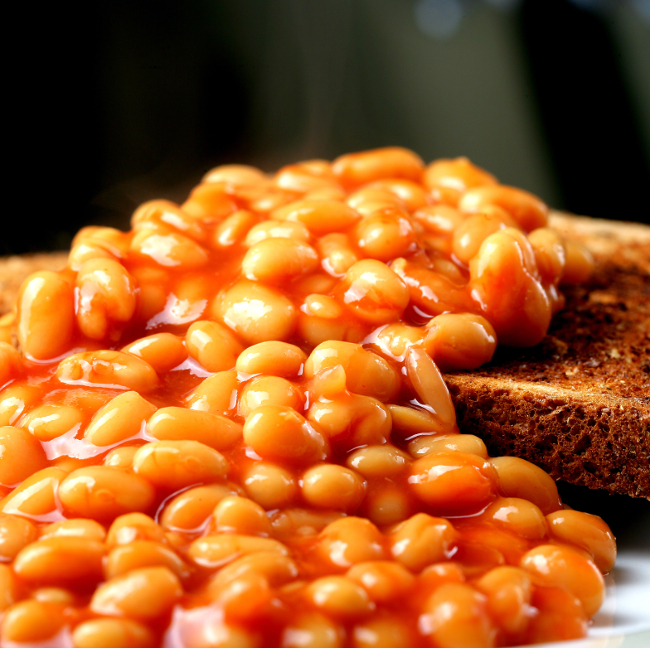
For your first meal after exercise, make sure it has the magic 20-25g of high quality protein in it as well as being high carbohydrate. You can start to be a bit more relaxed about fat intake now, but you should still be keeping all of your food, except the last meal of the day low in fat to facilitate the absorption of protein and carbohydrate. You could have beans on toast again, if you want something quick, but make sure you have a full can of beans this time. Pasta or rice based dishes with a low fat sauce are ideal too. As previously mentioned, TORQ do produce meals and breakfasts that are specifically designed for these kinds of events. We wouldn’t for a moment suggest that you need them or that they are in any way optimal at this point in the day, but they can form a useful and convenient part of your overall nutrition strategy, which is why we formulated them. Whether you consume one of our meals as your first meal after exercise, or later on in the day, just fit it in where it suits.
TORQ products are there to assist performance and of course you could probably quite easily rustle up your own high carbohydrate dish with 25g of protein in, but if we can make it easy for you by sticking natural ingredients in one packet, which can be decanted into boiling water and popped in the microwave for 15 minutes whilst you’re showering, then that’s the idea. The quick video clip below shows how easy our pasta meals are to make:
We have 3 nutritional profiles for our meals, 2:1, 3:1 and 5:1 Carbohydrate:Protein. Go for either the 3:1 or 5:1. The 5:1 is a bigger meal and contains more carbohydrate, but the 3:1 will work well too. At the end of the day, if you’re still hungry after you’ve had a 3:1 meal, you can always eat some fruit or graze on other high carb snacks. For further information on the full range of our optimised pasta meals, click HERE.
For the rest of the day, stick to the rules we discussed before and make sure that you continue to take onboard 20-25g of protein every 3 to 4 hours and graze constantly on fruit and high carbohydrate snacks. For your last meal of the evening, go for something rice or pasta based to get the carbohydrate in – again one of our 5:1 meals would work well if logistically it’s difficult to prepare a meal. Have a desert too and this is the time of day where you can be a even more relaxed about your fat intake. Don’t consume fat unnecessarily, but at the end of the day (literally), you’re going to be going to bed and sleeping, so you’ll have the whole night to digest your food.
Remember TORQ Energy Organic, the ‘invisible calorie’. If at any point you’re struggling to get the carbohydrate calories in, use this product. You might not want to eat anything more, but you’ll easily be able to drink half a pint of fruit juice laced with this magical white powder!
Day 2
This is going to be a little bit like Groundhog Day! We covered an awful lot on Day 1 and there’s nothing particularly bespoke you can add to Day 2, so it’s really a case of repeating the same procedure. You should be starting the day with a low fat high carbohydrate breakfast with 20-25g of protein and once again you should be looking at a minimum of 75g of carbohydrate and having breakfast a minimum of 1.5 hours prior to the start. Usually with stage racing, it will kick off early in the day, so you may be pushed to hit the 1.5-hour deadline, but if you should really try hard to make it work. For an optimal fuelling strategy to work during the race, your breakfast needs to be fully digested. Remember that 2:1 Glucose Derivatives:Fructose will deliver 90g of carbohydrate per hour during exercise, but this assumes that there’s nothing at the cliff face the moment you start fuelling. By ‘cliff face’ we refer to the carbohydrate sitting next to the intestinal wall waiting to be absorbed. The purpose of your breakfast should be:
- To deliver 20-25g of high quality protein.
- To deliver sufficient carbohydrate to replace any glycogen lost through your overnight fast.
Ramming a huge breakfast down your neck may instinctively feel like the right thing to do, but if you think through this logically it doesn’t make sense. If you have a sub-optimal carb mix sitting at the cliff face when you start the race, it’s going to delay the absorption of your optimal 2:1 carb formulations and you’re going to be ripping through your stored glycogen more quickly than necessary. Give your optimal breakfast time to digest and if you’re feeling peckish leading up to the start, take a bite of a TORQ Bar or Chew as they contain the optimal mix of carbs, then 5 minutes prior to the gun, as you did the day before, consume your ‘5 minutes to go’ gel and you’re all set.
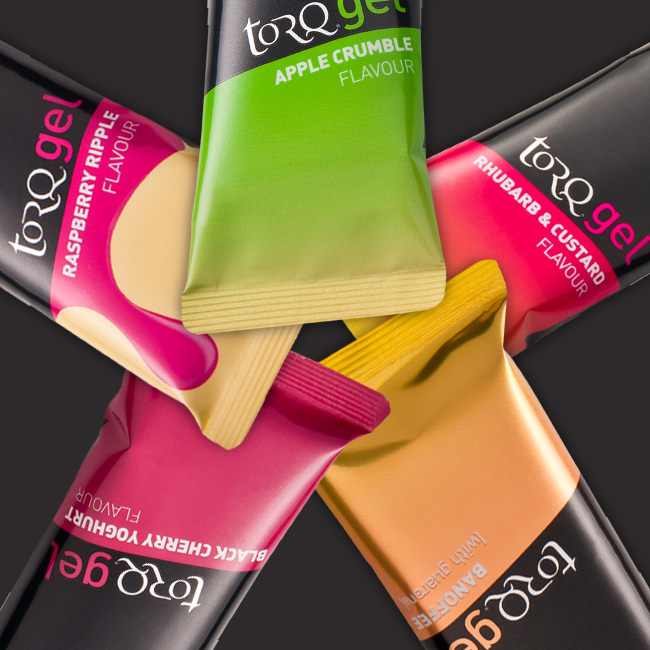
Suffice to say, it’s for all these reasons that a TORQ 3:1 Breakfast standardises your pre-race nutrition really nicely and as it’s so rapidly absorbed, you could get away with consuming it as close to 1 hour prior to the gun. We don’t want the monopoly on your Stage Race Nutrition, but we do design our products with athletes at the heart of our R&D. If you’ve got the time and you’re up early enough, have your beans on toast, it’s the food of champions, but just remember that we’ve got you covered with a convenient instant breakfast that you just need to add hot or cold water to.
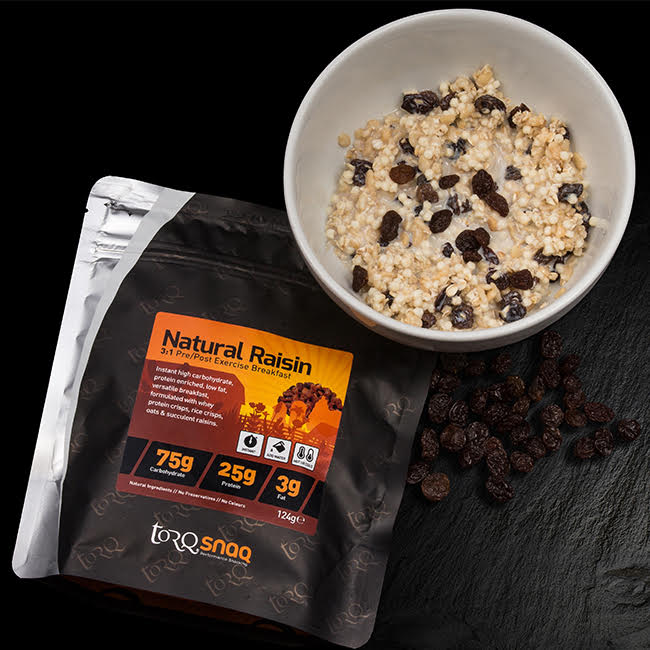
It goes without saying, if we’ve not made it clear by this point, during the stage, once again fuel your performance fastidiously. Every gram of carbohydrate you consume through your fuelling products is a gram of carbohydrate you won’t be burning from your glycogen stores and if you don’t understand by this point in the article how important those stores are, quite frankly we give up! For instance, did you know that if you empty your glycogen stores and ‘bonk’ that’s pretty much your stage race finished. It will take 48 hours of high carbohydrate eating and no exercise to fully replenish your glycogen stores again and obviously you’re never going to have 48 hours of ‘no exercise’ during a stage race. Your primary aim from a nutrition perspective is to both protect your glycogen stores and protect your muscle integrity, hence our obvious obsession with protein and carbohydrate consumption as our key messages. If you don’t address this from Day 1, it’s only a matter of ‘when’ you’re going to bonk. Perhaps not Day 2 or 3, but it’ll bite you on the backside on Day 4.
Consume your recovery drink within 15 minutes of finishing and graze on high carbohydrate foods to plug the time gap between the calories consumed from your recovery drink and those in your next proper meal. Carry on grazing on high carbohydrate foods all day and don’t forget to get your 4-hourly protein hits either through a meals or snacks as the day progresses.
Day 3 onwards and some technical information
Need we tell you that Day 3 is like Groundhog Day again? Stick with the routine and let’s use this as an opportunity to discuss a few technical details that are likely to lead you to a better performance during your stage race.
Our Recovery Drink has been mentioned a couple of times during this article. You can of course use any off-the-shelf recovery drink but make sure that it’s 3:1 Carbohydrate to Protein with the protein coming from Whey (the best) or Pea if you’re vegan. Other proteins are not absorbed and utilised as quickly. Other than our use of whey and pea protein in our recovery drinks, there are some other reasons why you might want to choose TORQ over some of the other brands that are out there.
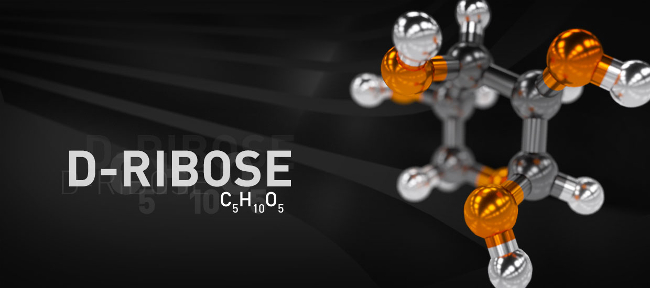
Firstly, TORQ Recovery Drinks contain both Ribose and Glutamine and this is very unique to our brand (also available separately as TORQ BULQ products). For more information about both of these potent micronutrients, click on the links in the text. Ribose works at a cellular level to replenish ATP, the energy currency of the cell. It’s manufactured by the human body from glucose, but it’s a long process, so supplementing with it in its raw form boosts cellular recovery by around 400%. Glutamine is an amino acid, which although hugely abundant in the human body, becomes a very important fuel source for the major organs of the body, which tend to get worked-over when you exercise. Immediately after exercise you’ll break down muscle protein to release glutamine into your bloodstream to fuel this demand. By consuming Glutamine immediately after exercise, you protect your muscles from this cannibalisation by providing an alternative source for your organs to use, so it really is an important nutrient to include. Glutamine supplementation protects your muscles after exercise. Not all recovery drinks are the same. Do your research and expect a clear and precise explanation of why ingredients have been included and don’t take anyone’s word for it unless they present you with the research references. We always will (see references list at the end of this article).
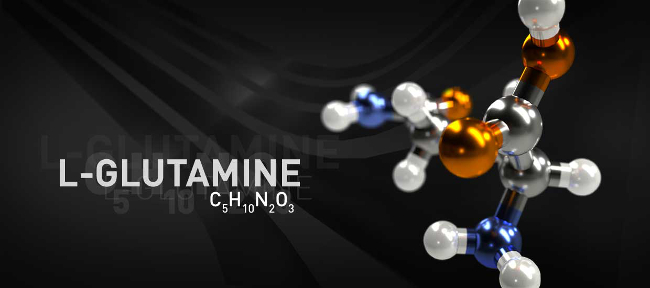
If you’ve spent a while reading this article and watching the videos, we’re sure you’ve got time to watch one more. There are elements of the TORQ Recovery System, which will really strike a chord with you in relation to stage racing or multi-day events, so please watch it and see what you think:
You will have noticed that a product called TORQ Recovery Plus was mentioned toward the end of the video. If you’re really serious about your racing and performance, you should consider using this product in the month leading up to your event and continue taking it throughout. It’s a highly functional product and combined with the practices discussed in this article, it really is the icing on the cake.
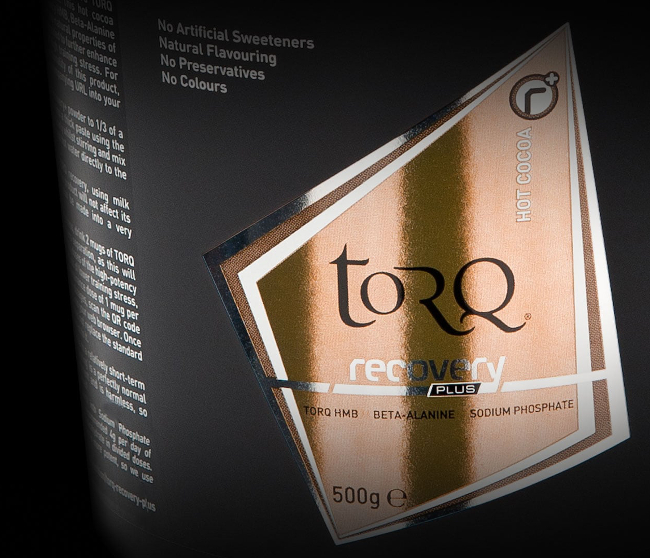
We also sell both Beta-Alanine and HMB (the 2 active compounds in TORQ Recovery Plus) separately under our BULQ Nutrition range, so you can purchase them in bulk and it will work out more economical on price.
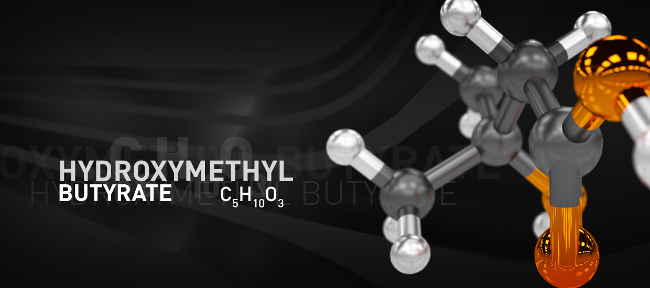
For Stage Racing in particular, the HMB nutrient is exceptional. It is a metabolite of the amino acid leucine and has incredible muscle repair and strengthening properties – almost an insurance policy for your muscles to keep them on the road during your event. For further information on HMB, click HERE.
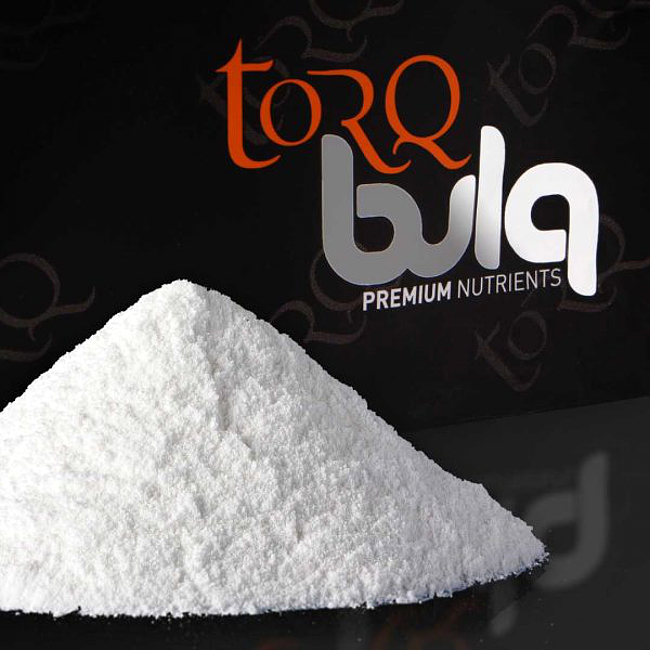
Beta-Alanine becomes really useful if there is a high intensity requirement from your multi-day event. Usually if intensity is involved, the stages will be shorter, like our stage race in Lanzarote. Beta-Alanine supplementation during longer stage races or events where you’re spending many hours in the saddle is likely to offer little or no benefit. For more information on Beta-Alanine, click HERE.
Your choices are to use either TORQ Recovery Plus, or at the very least, TORQ HMB from our BULQ range. We’re not going to pretend that HMB in its raw form tastes nice (it really doesn’t), but mix it with some fruit juice and tip it down your neck – your legs will thank you.
Recovering from the final stage
Interestingly, whilst we’re going to suggest that you take a recovery drink as soon as you finish, just so that you limit the tiredness you’re going to feel the next day, beyond that, you know what, who cares? Look what you’ve achieved through solid dedication and sticking to a solid set of rules? Have a beer and a pizza, chill out and above all, feel very satisfied with yourself for executing the perfect nutritional regime.

If you have any questions at all about this article or the products mentioned within it, please don’t hesitate in contacting us. If you would like discuss your own situation in more detail, why not contact us to discuss booking in with our Fitness Consultancy? We’ve been consulting and advising athletes since 1999, so we have a lot of experience to share with you. Email enquiries@torqfitness.co.uk or phone 0344 332 0852.
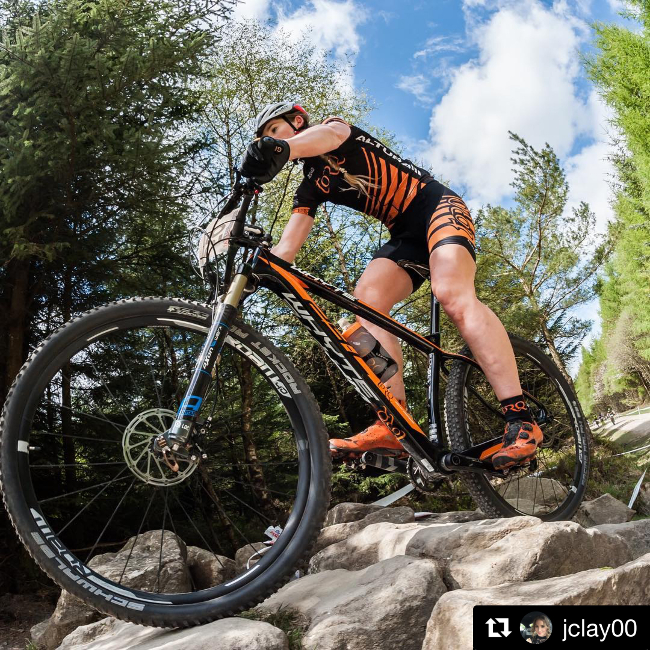
References
Research studies supporting fuelling with 2:1 Multiple Transportable Carbohydrates:
- Stellingwerff, T & Cox, GR. (2014)
Systematic review: Carbohydrate supplementation on exercise performance or capacity of varying durations. Appl Physiol Nutr Metab. 2014 Sep;39(9):998-1011. - Wilson. PB., Ingraham, SJ. (2015)
Glucose-fructose likely improves gastrointestinal comfort and endurance running performance relative to glucose-only. Scand J Med Sci Sports. [Epub ahead of print]. - Currell, K & Jeukendrup, A.E. (2008)
Superior endurance performance with ingestion of multiple transportable carbohydrates. Med Sci Sports Exerc. 40(2):275–81. - Triplett, D., Doyle, D., Rupp, J., Benardot, D. (2010)
An isocaloric glucose-fructose beverage’s effect on simulated 100-km cycling performance compared with a glucose-only beverage. Int J Sport Nutr Exerc Metab. 20(2):122–31 - Tarpey, M.D., Roberts, J.D., Kass, L.S., Tarpey, R.J., Roberts, M.G. (2013)
The ingestion of protein with a maltodextrin and fructose beverage on substrate utilisation and exercise performance. Appl Physiol Nutr Metab. 38(12):1245–53. - Rowlands, D.S., Swift, M., Ros, M., Green, J.G. (2012)
Composite versus single transportable carbohydrate solution enhances race and laboratory cycling performance. Appl Physiol Nutr Metab. 37(3):425–36. - Baur, D.A., Schroer, A.B., Luden, N.D., Womack, C.J., Smyth, S.A., Saunders, M.J. (2014)
Glucose-fructose enhances performance versus isocaloric, but not moderate, glucose. Med Sci Sports Exerc. 46(9):1778–86. - Rowlands, D.S., Thorburn, M.S., Thorp, R.M., Broadbent, S.M., Shi, X. (2008)
Effect of graded fructose co-ingestion with maltodextrin on exogenous 14C-fructose and 13C-glucose oxidation efficiency and high-intensity cycling performance. J Appl Physiol. 104:1709–19. - O’Brien, W.J & Rowlands, D.S. (2011)
Fructose-maltodextrin ratio in a carbohydrate-electrolyte solution differentially affects exogenous carbohydrate oxidation rate, gut comfort, and performance. Am J Physiol Gastrointest Liver Physiol. 300(1):G181–9. - O’Brien, W.J., Stannard, S.R., Clarke, J.A., Rowlands, D.S. (2013)
Fructose–maltodextrin ratio governs exogenous and other CHO oxidation and performance. Med Sci Sports Exerc. 45(9):1814–24. - Rowlands, D.S., Swift, M., Ros, M., Green, J.G. (2012)
Composite versus single transportable carbohydrate solution enhances race and laboratory cycling performance. Applied Physiology, Nutrition, and Metabolism. 37(3): 425-436. - Smith, J.W., Pascoe, D.D., Passe, D., Ruby, B.C., Stewart, L.K., Baker, L.B., et al. (2013)
Curvilinear dose-response relationship of carbohydrate (0–120 g·h−1) and performance. Med Sci Sports Exerc. 45(2):336–41. - Roberts, J.D., Tarpey, M.D., Kass, L.S., Tarpey, R.J., Roberts, M.G. (2014)
Assessing a commercially available sports drink on exogenous carbohydrate oxidation, fluid delivery and sustained exercise performance. J Int Soc Sports Nutr. 11(1):1–14. - Jentjens, R.L., Underwood, K., Achten, J., Currell, K., Mann, C.H., Jeukendrup, A.E. (2006)
Exogenous carbohydrate oxidation rates are elevated after combined ingestion of glucose and fructose during exercise in the heat. J Appl Physiol. 100(3):807–16. - Jeukendrup, A.E & Moseley, L. (2010)
Multiple transportable carbohydrates enhance gastric emptying and fluid delivery. Scand J Med Sci Sports. 20(1):112–21. - Davis, J.M., Burgess, W.A., Slentz, C.A., Bartoli, W.P. (1990)
Fluid availability of sports drinks differing in carbohydrate type and concentration. Am J Clin Nutr. 51(6):1054–7. - Jentjens, R.L., Venables, M.C., Jeukendrup, A.E. (2004)
Oxidation of exogenous glucose, sucrose, and maltose during prolonged cycling exercise. J Appl Physiol. 96(4):1285–91. - Jentjens, R.L., Achten, J., Jeukendrup, A.E. (2004)
High oxidation rates from combined carbohydrates ingested during exercise. Med Sci Sports Exerc. 36(9):1551–8. - Wallis, G.A., Rowlands, D.S., Shaw, C., Jentjens, R.L., Jeukendrup, A.E. (2005)
Oxidation of combined ingestion of maltodextrins and fructose during exercise. Med Sci Sports Exerc. 37(3):426–32. - Jentjens, R.L., Moseley, L., Waring, R.H., Harding, L.K., Jeukendrup, A.E. (2004)
Oxidation of combined ingestion of glucose and fructose during exercise. J Appl Physiol. 96(4):1277–84. - Jentjens, R.L & Jeukendrup, A.E. (2005)
High rates of exogenous carbohydrate oxidation from a mixture of glucose and fructose ingested during prolonged cycling exercise. Brit J Nutr. 93:485–92. - Fuchs, C.J., Gonzalez, J.T., Beelen, M., Cermak, N.M., Smith, F.E., Thelwall, P.E., Taylor, R., Trenell, M.I., Stevenson, E.J., van Loon, L.J. (2016)
Sucrose ingestion after exhaustive exercise accelerates liver, but not muscle glycogen repletion compared with glucose ingestion in trained athletes. J Appl Physi. [Epub ahead of print].
For reviews see…
Jeukendrup, A.E. (2010) Carbohydrate and exercise performance: the role of multiple transportable carbohydrates. Curr Opin Clin Nutr Metab Care. Jul;13(4):452-7.
Rowlands, D.S., Houltham, S., Musa-Veloso, K., Brown, F., Paulionis, L., Bailey, D. (2015) Fructose-Glucose Composite Carbohydrates and Endurance Performance: Critical Review and Future Perspectives. Sports Med. Nov;45(11):1561-76.
Research studies supporting supplementation with D-Ribose:
- Burke, E.R PhD (1999)
D-Ribose, What You Need to Know. Avery Publishing Group. This review publication contains 46 references from selected peer-reviewed published research papers. - Burke, E.R PhD (2002)
Serious Cycling. Human Kinetics. Pp 167-169. - Jacob Teitelbaum, Janelle Jandrain and Ryan McGrew (2012)
Treatment of Chronic Fatigue Syndrome and Fibromyalgia with D-Ribose – An Open-label, Multicenter Study. The Open Pain Journal Pp 32-37. 4th July 2012.
Research studies supporting supplementation with L-Glutamine:
- Lacey, JM, Wilmore, DW. (Aug 1990).
Is glutamine a conditionally essential amino acid?. Nutrition Reviews. 48 (8): Pp 297–309 - Brosnan, JT. (June 2003).
Interorgan amino acid transport and its regulation. J. Nutr. 133 (6 Suppl 1): Pp 2068–2072 - Watford, M. (2015)
Glutamine and glutamate: Nonessential or essential amino acids?. Animal Nutrition. 1 (3): 119–122. - Yamamoto, T, Shimoyama, T, Kuriyama, M (2016).
Dietary and enteral interventions for Crohn’s disease. Current Op in Biotechnology. 44: 69–73 - Melis, GC, Ter Wengel, N, Boelens, PG, Van Leeuwen, PA. (2004).
Glutamine: recent developments in research on the clinical significance of glutamine. Curr. Opin. Clin. Nutr. Metab. Care. 7, 59–70. - Castell, LM, Newsholme, EA. (1997).
The effects of oral glutamine supplementation on athletes after prolonged, exhaustive exercise. Volume 13, Issues 7-8, Pp 738–742.
Research studies supporting supplementation with HMB:
- Passwater, R.A. PhD & Fuller, J. PhD (1997)
Building Muscle Mass, Performance & Health. Keats Publishing Group. This review publication contains multiple references from selected peer-reviewed published research papers. - Burke, E.R PhD (2002)
Serious Cycling. Human Kinetics. Pp 167-169. - Williams, M.H. PhD (1998)
The Ergogenics Edge. Human Kinetics. Pp 210-213.
Research studies supporting supplementation with Beta-Alanine:
- Artioli, G.G., Gualano, B., Smith, A., Stout, J. and Lancha Jr, A.H., 2010
Role of beta-alanine supplementation on muscle carnosine and exercise performance. Med Sci Sports Exerc, 42(6), pp.1162-1173. - BAUER, K. and SCHULZ, M., 1994
Biosynthesis of carnosine and related peptides by skeletal muscle cells in primary culture. The FEBS Journal, 219(1‐2), pp.43-47 - Derave, W., Özdemir, M.S., Harris, R.C., Pottier, A., Reyngoudt, H., Koppo, K., Wise, J.A. and Achten, E., 2007
β-Alanine supplementation augments muscle carnosine content and attenuates fatigue during repeated isokinetic contraction bouts in trained sprinters. Journal of applied physiology, 103(5), pp.1736-1743 - Dunnett, M. and Harris, R.C., 1999
Influence of oral ß‐alanine and L‐histidine supplementation on the carnosine content of the gluteus medius. Equine veterinary journal, 31(S30), pp.499-504.
